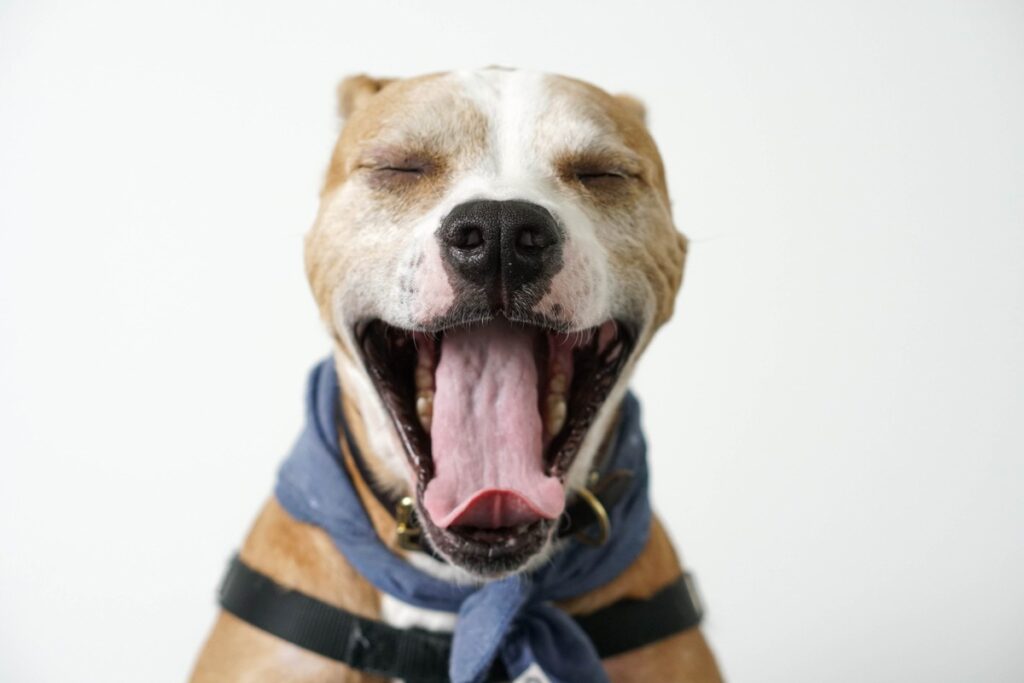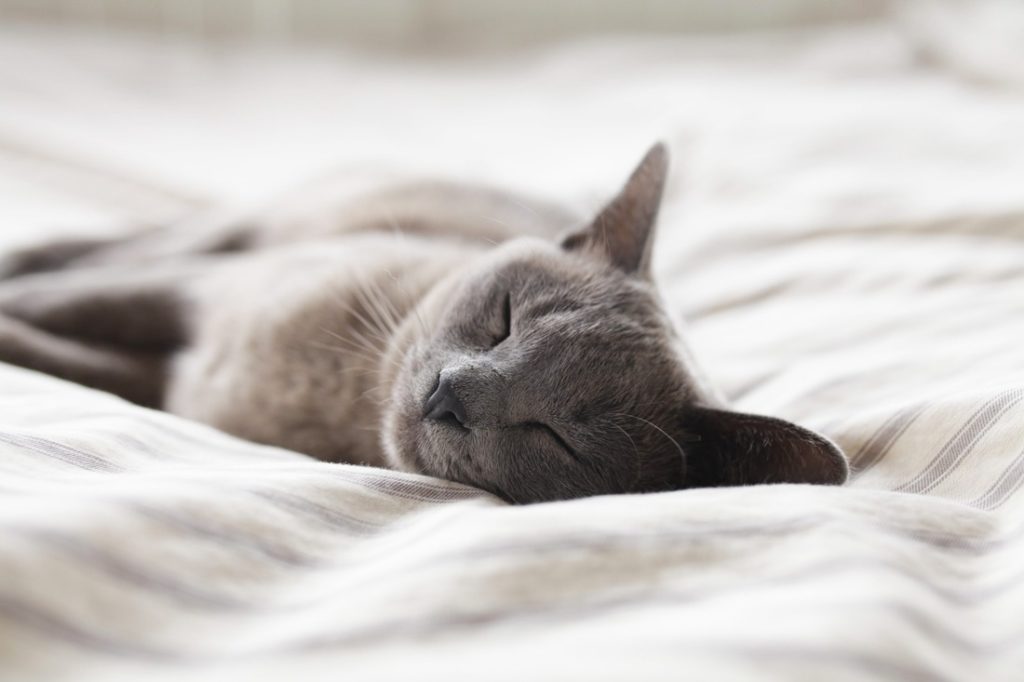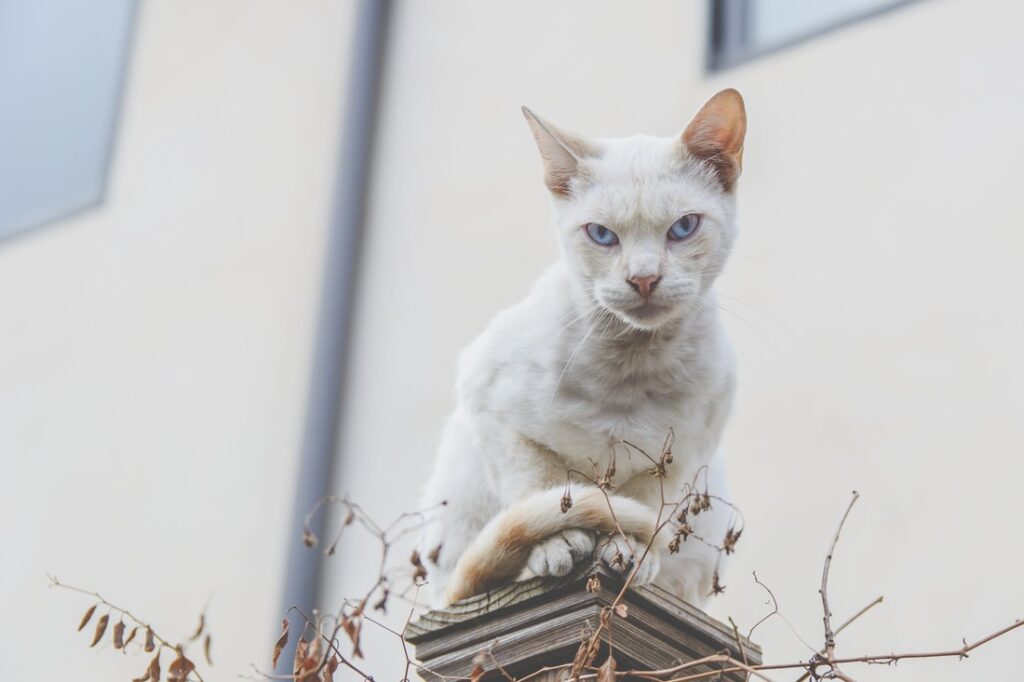Find us a pet owner who has never wished their pet could speak to them– you’ll be hunting for quite some time. But really, our pets are constantly communicating with us. They just speak in pet body language rather than plain English. Need a helping hand deciphering what they’re trying to tell you? Just keep reading…

Is your pet…stressed?
Cats can be extremely sensitive to change. Whether you’ve recently moved house, brought a new baby or pet home, or simply have unfamiliar guests to visit, all of these things can trigger stress for your feline friend. If you think your cat could be feeling worried or stressed, keep your eyes peeled for:
- Crouching
- Tensed-up muscles
- Whiskers pointed forwards
- Eyes wide open with dilated pupils
- Flat ears pressed down against their head
- Tail tucked under their body
- Fleeing the stress-inducing situation to hide – we don’t blame them!
Stress in dogs can be a lot subtler. If not spotted, some dogs will respond to whatever’s worrying them with fear aggression, so you really need to observe your pet body language closely. Fear aggression is a serious behaviour that can be triggered by anything from other dogs to strangers or children to loud noises. Keep a lookout for any of these clues and you’ll know straight away what your dog’s trying to tell you:
- Excessive yawning
- Lip licking
- Raspy panting
- Shaking
- Drooling
- Lack of focus
- Raised hackles – this makes the dog appear bigger but it also releases odour from the glands contained in the dog’s hair follicles.

Is your pet… relaxed?
As a cat owner, you’ll know one of the top perks of owning a feline is having a warm, purring cat curled up on your lap after a long day at work – pure bliss. A sleepy cat is often a contented cat, especially if they’re sleeping out in the open or in bed with you – that’s a sure sign they trust their environment completely! These are the clear pet body language indicators that you have a happy cat in your home.
- Kneading their paws
- Relaxed body posture
- Upright tail with a slight curve at the tip
- Slow blinking – cats actually only close their eyes in the presence of people they trust so you should feel privileged!
Is there anything better than a happy, relaxed hound? We don’t reckon so (a happy, relaxed hamster, cat, bunny – you get the gist – are just as good, of course). As a pet owner you probably just know when your pup is feeling content but we’ve rounded up the signs that you have a truly relaxed pooch on your hands.
- Slightly open mouth and lolling tongue
- Play bowing
- Laying on their back
- Relaxed facial expression
- Squinty or blinking eyes
- Swishy wagging tail
- Wiggling backside

Is your pet… angry?
It’s not hard to spot a peeved puss. In fact, aggression is one of the most common behavioural issues in felines. Just in case you’re not too quick at picking up on the subtleties of a hissing cat, we’ve rounded up the main signs to watch for.
- Stiff, lowered tail
- Sloped back
- Direct stare
- Upright ears
- Narrowed pupils
- Retracted whiskers
- Open-mouthed hissing or spitting
- Swatting, striking with paws
- Hackles up – this includes the hackles on the tail
When a dog feels like they need to defend themselves from something they perceive as a threat, they’ll do everything in their power to keep that threat away. If the threat doesn’t take the hint, their behaviour is likely to switch pretty swiftly from defensive to offensive and your dog may well bite. These behaviours are usually pretty obvious and easy to recognise, but just in case…
- Lunging
- Staring
- Tense mouth
- Teeth showing with lips pulled back
- Air snapping
- Snapping with skin contact
- Stiff, quick wagging tail – a wagging tail doesn’t always mean your pooch is happy.
Are you fluent in pet body language? Share your tips with us, and we can repost them on our social media to share with the rest of the Tailster community!